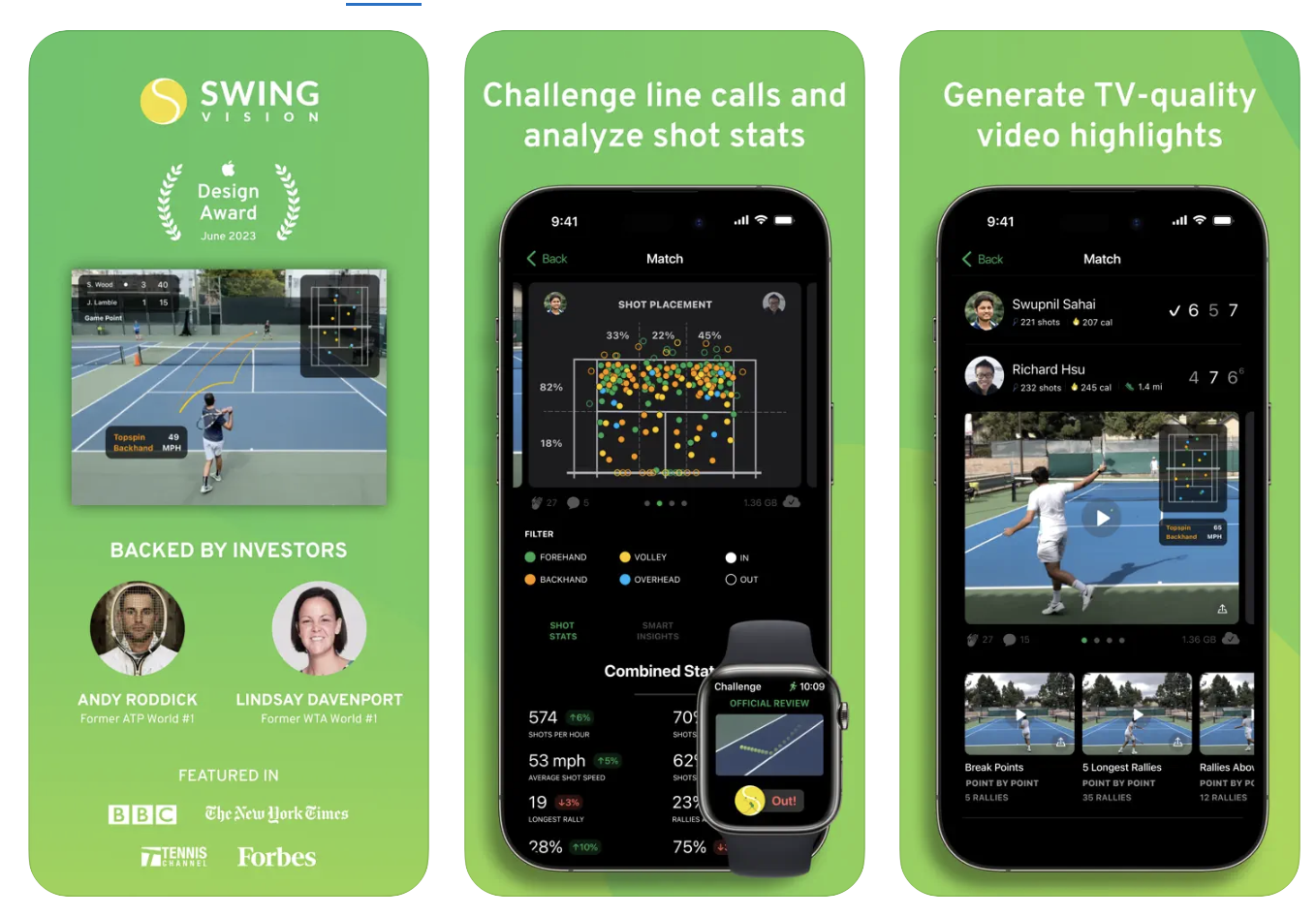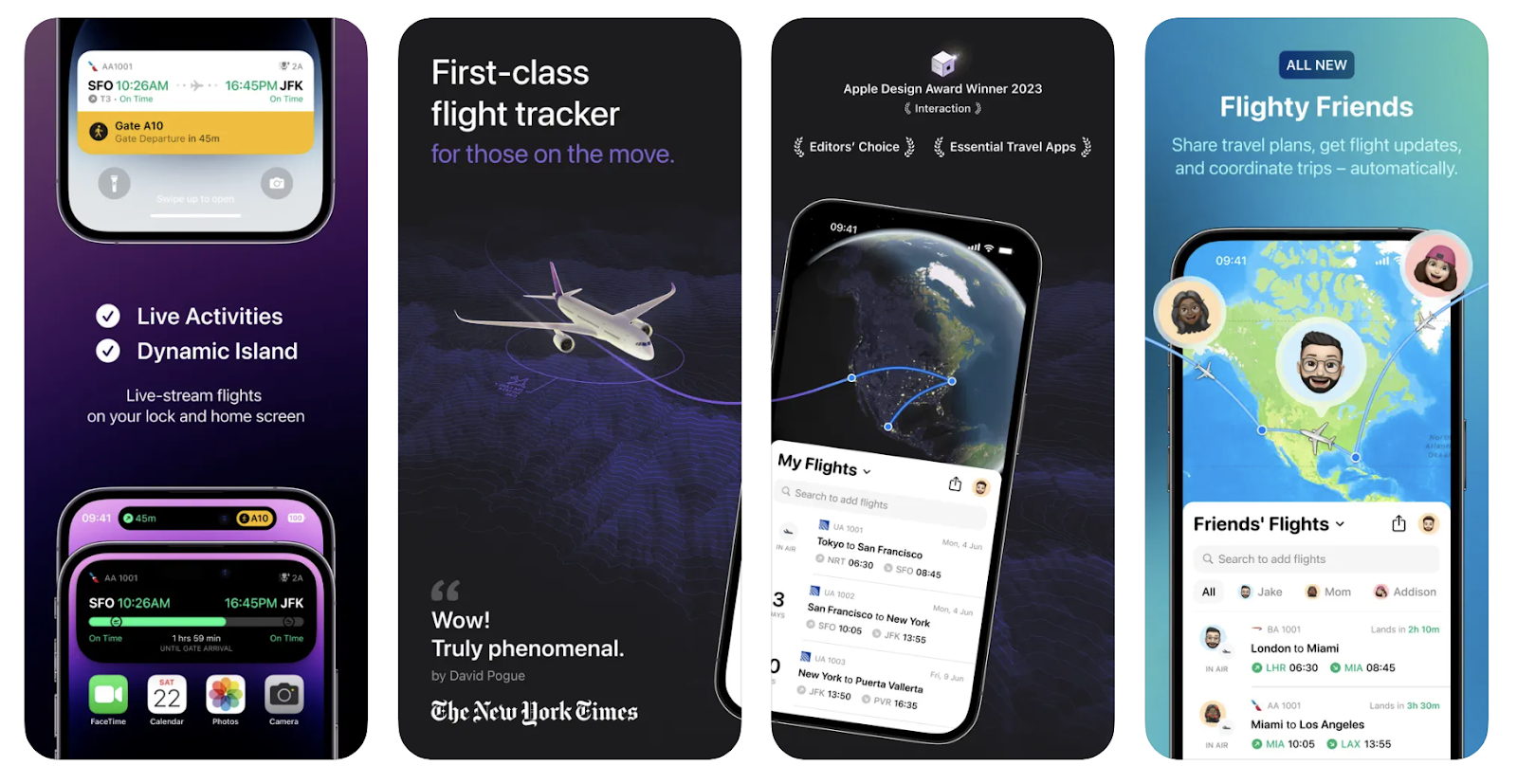How to improve app ratings in 2024
Published 30th January, 2024 by Estelle Oliveri As we step into 2024, it's time to focus on a common goal we share: improving app ratings. In the fast-paced world of app development, achieving high ratings is about striking the right balance between our tried-and-true strategies and adapting to what users expect today.
As we step into 2024, it's time to focus on a common goal we share: improving app ratings. In the fast-paced world of app development, achieving high ratings is about striking the right balance between our tried-and-true strategies and adapting to what users expect today. In this overview we'll be covering:
- Start with a Compelling Idea
- UI & UX: The Heartbeat of Your App
- The Three T's: Test, Test, and Test
- Super Responsiveness to Stability and Performance Issues
- Deep Dive into Reviews: The Key to Unlocking User Insights
- Solicit Reviews with Finesse: Timing is Everything
- The Importance of Beta Testing to Improve App Ratings
- Proactive Engagement: The New Norm to Improve App Ratings
Want to level up your app store review analysis?
Try Appbot free now, no credit card needed →Here at Appbot, we've gathered some insights over the years that we're eager to share with you. It's about merging our experience with the latest trends to elevate your app's user experience. So, let's dive in together and explore how we can make your app not just good, but great – and watch those ratings climb. Ready to make your app stand out this year? Let's get started!
Start with a Compelling Idea
The significance of beginning with a compelling concept for your app has never been more crucial. In an era where users are inundated with choices and their attention spans are increasingly fragmented, capturing and maintaining their interest is key. Every groundbreaking app starts with this kind of compelling idea, a unique spark that each developer brings to life in their own way.
An effective approach, as we've explored in our article on Addictive Apps, is to craft an engaging and positively addictive user experience. This is especially pertinent in 2024, as users seek apps that not only serve a functional purpose but also provide a delightful and immersive experience. Designing your app to be a valuable and enjoyable part of your users' daily lives is not about promoting negative habits; it's about creating a meaningful connection with your users, offering them something they look forward to interacting with every day.
This approach is more than just a trend; it's a response to the evolving user expectations each year. Users look for apps that resonate with them on a personal level, apps that understand their needs and preferences. By starting with a compelling idea that focuses on creating such an engaging experience, you set the stage for an app that not only attracts users but also forms a lasting relationship with them.
UI & UX: The Heartbeat of Your App
UI (User Interface) and UX (User Experience) are more than design elements; they are the core of your app's appeal. With advancing technology, creating a captivating UI and intuitive UX is not just easier, but essential for standing out. Here's what developers should focus on this year:
- Embracing Advanced Technologies: Utilize AR and AI with support from leading AI development companies to create immersive and personalized experiences. AR can add an interactive dimension, while AI can tailor the experience to user preferences.
Check out SwingVision who use the combined powers of AI and Neural Engine to help with every aspect of tennis. Point your camera at the court and SwingVision’s advanced video-tracking capabilities evaluate your form, highlight your strengths and suggest areas of improvement.
- Fluid Navigation and "Wow" Moments: Ensure smooth and engaging navigation. Integrate subtle animations, interactive elements, and gamification to make using your app a delightful experience.
Duolingo, a family favorite, provides an excellent example of “wow” moments. The team have embarked on a comprehensive redesign of both interface and content, making it even easier and more enjoyable to start learning a new language. Quests, challenges, and leaderboards help gamify the experience and help keep people engaged, exploring, and committed to their learning streak.
- Intuitive Interactions: Develop gesture-based controls, voice commands, and context-aware functionalities. Make your app not just a tool, but a smart companion.
An example of intuitive interfaces and effortless controls is Flighty - winner of the 2023 Apple Design Awards. This beautifully designed flight tracker / travel planner comes with an intuitive interface, comprehensive live maps, and a look that mirrors time-honored airport design conventions.
- Accessibility and Inclusivity: Design your app to be usable by everyone, including those with disabilities. Incorporate features like voice-over, high-contrast modes, and easy-to-read fonts.
Check out Apple Design Winner 2023 Stitch - designed for as many people as possible, with custom accessibility options for those with color blindness, low vision, and motion sensitivities.
- Consistent Updates and User Feedback: Regularly update your app based on user feedback. This shows that you value user input and are committed to improving their experience.




In 2024, a strong focus on UI and UX is vital to improve app ratings. It's about creating an app that's not only functional but also enjoyable to use, accessible to all, and constantly evolving with user needs.
The Three T's: Test, Test, and Test
The mantra of "test, test, and test" remains more relevant than ever. With the increasing complexity of apps and the diversity of user environments, extensive testing across various devices, operating systems, and regional settings is non-negotiable. Here's why this comprehensive testing approach is crucial to improve app ratings:
- Diverse Device and OS Compatibility: The variety of devices and operating systems used globally has continued to expand. Testing your app across this wide range ensures it functions seamlessly, regardless of the user's device or OS. This compatibility is key to user satisfaction and, consequently, higher app ratings.
- Regional and Cultural Considerations: This year, apps will be more global than ever. Testing across different regions helps in understanding and catering to cultural nuances, local regulations, and language preferences. This level of localization can significantly enhance user experience and engagement.
- Adapting to Varied Internet Speeds: Internet connectivity still varies greatly around the world. Testing your app's performance across different internet speeds ensures it remains efficient and responsive, providing a consistent user experience that can boost ratings.
- Emerging Functionalities: Technologies like voice commands, AR, and AI have become more prevalent. Testing these functionalities ensures they work correctly and are intuitive for users, which can be a significant factor in improving app ratings.
- User-Centric Focus: Testing goes beyond technical correctness; it's about ensuring the app meets user expectations in real-world scenarios. This includes usability testing, user journey simulations, and accessibility testing, making the app more user-friendly and inclusive.
- Rapid Iteration and Feedback Integration: The fast-paced nature of app development demands quick iterations and the integration of user feedback. Regular testing cycles allow for prompt identification and resolution of issues, keeping the app relevant and high-performing.
- Integrate Real-Time Feedback Tools: Utilizing real-time review monitoring tools is like having a direct line to your users' experiences. These tools can alert you the moment a user encounters a hiccup, allowing you to jump into action swiftly. It's all about being proactive rather than reactive. Integrate app store reviews with Slack, Freshdesk or Zendesk to share verbatim reviews with your team.
- Leverage Crash Analytics Tools: Crash analytics tools are your best friends in the app world. They help you dig into the nitty-gritty of what went wrong and why. By analyzing crash reports, you can pinpoint the root cause and work on a fix before more users are affected.
- Communicate, Communicate, Communicate: Transparency is key. When users report a crash or a bug, acknowledge it. Reply to app store reviews, whether the fix is already rolled out or still in the works. This kind of communication shows that you value their experience and are committed to providing a seamless app.
- Rapid Response and Iteration: Today, the app market is more competitive than ever. Users expect quick fixes to the problems they face. Implementing a rapid response and iteration process ensures that stability issues are addressed promptly, keeping your app up-to-date and reliable. You can reply directly to app reviews in slack and generate AI replies should you need assistance with crafting the best response.
- User Reviews as a Feedback Channel: Don't just read user reviews; use them as a valuable feedback channel. When users take the time to report an issue via a review, responding to them not only helps in fixing the problem but also builds a relationship with your user base. It shows that you're listening and care about their experience.
- Preventive Measures: While being responsive is crucial, prevention is always better than cure. Regularly updating your app, conducting thorough testing (remember the Three T's!), and keeping an eye on performance metrics can help you avoid many common issues.
- Leverage Sentiment Analysis: Utilizing a sentiment analysis tool can provide a deeper understanding of the emotions and opinions behind user feedback. This approach goes beyond basic analytics, offering a more nuanced view of user sentiment, which is crucial for addressing their needs and concerns.
- Classify and Group Feedback: Organizing feedback into categories or themes helps in identifying common issues or popular features. This can be achieved through automated classification tools, which sort user reviews into relevant topics, making it easier to spot trends and patterns.
- Prioritize Development Efforts:Analyzing reviews can highlight what users love and what they don’t, guiding you on where to focus your development efforts. This prioritization ensures that resources are allocated to areas that will have the most significant impact on user satisfaction and app ratings.
- Automated Reporting for Efficiency: Dashboards and automated reporting tools can save time and provide a clear overview of user feedback trends. These tools can help in sharing insights across teams and departments, ensuring that everyone is aligned on user feedback and app improvement strategies.
- Stay Updated with Real-Time Monitoring: Keeping up with new reviews as they come in ensures that you’re always in tune with user feedback. Real-time review monitoring tools can alert you to new reviews, enabling a swift response to any emerging issues or positive feedback.
- Engage with Your Users: Responding to reviews, particularly those that point out issues, demonstrates that you value user feedback. Engaging with users through replies, whether AI, automated or personalized, can enhance user satisfaction and foster loyalty.
- Identify Positive Experience Moments: The key to effective review solicitation lies in timing. Pay attention to user behavior and identify moments when they are most likely to have had a positive experience. This could be after achieving a milestone, completing a task successfully, or experiencing a particularly enjoyable feature. --> Check out this article here on app review prompts.
- Personalized Engagement: Tailor your prompts to reflect the user's recent experience. Personalized messages that acknowledge their achievements or satisfaction with the app can make users feel valued and more inclined to leave a review.
- Avoid Disruption: Ensure that your prompts do not disrupt the user experience. Intrusive requests can lead to frustration, potentially resulting in negative reviews. Instead, integrate your prompts seamlessly within the app’s flow, making them a natural part of the interaction.
- Leverage In-App Analytics: Use in-app analytics to understand user behavior and preferences. This data can help you determine the optimal timing and approach for review prompts, increasing the likelihood of receiving positive feedback.
- Encourage Constructive Feedback: While positive ratings are desirable, constructive feedback is invaluable. Encourage users to share their honest opinions and suggestions. This not only helps in improving your app but also shows users that you are committed to catering to their needs.
- Follow-Up on Feedback: Once you receive reviews, whether positive or negative, make sure to follow up. Acknowledging and responding to user reviews can enhance user engagement and show that you value their input.
- Diverse Demographic Representation: The global app market is incredibly diverse, and your beta testing group should reflect this diversity. By including a wide range of demographics in your beta testing, you can gather feedback that represents a variety of user experiences and preferences. This inclusivity in testing helps in identifying and addressing issues that might affect specific user groups, ultimately helping to improve app ratings.
- Testing Across Multiple Devices: With the plethora of devices available today, ensuring your app performs seamlessly across different models and operating systems is vital. Beta testing across a broad spectrum of devices helps in identifying device-specific issues, ensuring a smooth experience for all users, which is a key factor in improving app ratings.
- Real-World Usage Scenarios: Beta testing provides an opportunity to see how your app performs in real-world scenarios. This includes testing under various network conditions, user interactions, and usage patterns. Understanding how your app behaves in these scenarios is critical to fine-tuning its performance and usability, which directly impacts your efforts to improve app ratings.
- Early Identification of Bugs and Issues: Beta testing is your first line of defense against potential bugs and issues that could negatively impact user experience. Early identification and resolution of these issues mean that when your app goes live, it’s already polished and primed for a positive reception, which is essential to improve app ratings.
- Gathering Constructive Feedback: Beta testers often provide detailed and constructive feedback that goes beyond what you might receive post-launch. This feedback is invaluable in making the necessary adjustments and improvements to your app, ensuring it meets or exceeds user expectations, thereby helping to improve app ratings.
- Building Anticipation and Advocacy: A well-run beta test can also create advocates for your app. Engaged beta testers are likely to spread the word about your app, building anticipation and excitement for its release. This word-of-mouth marketing can be a powerful tool in boosting your app’s visibility and ratings.
- Transforming Challenges into Positive Experiences: When users face issues, the way you engage with them can make all the difference. Proactive customer support can turn a potential negative review into a positive testimonial. By addressing problems promptly and effectively, you not only solve the immediate issue but also demonstrate your commitment to user satisfaction, which is key to improving app ratings.
- Integrated In-App Chat Support: Consider integrating a chat support feature directly within your app. This allows users to receive immediate assistance without leaving the app environment. Quick and easy access to support not only enhances the user experience but also increases the likelihood of users leaving positive reviews, thereby helping to improve app ratings.
- Building Trust and Loyalty: Proactive engagement builds trust between users and your app. When users know that help is readily available, they feel more confident and satisfied with your app. This trust translates into loyalty and positive word-of-mouth, both of which are instrumental in improving app ratings.
- Gathering Valuable Feedback: Engaging with users proactively provides an opportunity to gather valuable feedback. This feedback can be used to make continuous improvements to your app, ensuring it meets user needs and expectations, which is essential for higher app ratings.
- Enhancing Overall User Experience: Proactive engagement is not just about solving problems; it's about enhancing the overall user experience. By ensuring that users have a smooth, uninterrupted experience with your app, you increase user satisfaction, which is directly reflected in your app ratings.
- Staying Ahead of Issues: Proactive engagement also means anticipating potential issues before they become major problems. By monitoring user behavior and feedback, you can identify and address issues proactively, maintaining a high-quality user experience that contributes to improved app ratings.
- Unlock deeper insights into user sentiment with Appbot's advanced sentiment analysis tool for app reviews.
- Harness the power of NLP (Natural Language Processing) to analyze and understand app reviews at a deeper level.
- Stay informed and in control of your app's reputation with Appbot's comprehensive app review monitoring. tool.
- Leverage Appbot's App Store Reviews API to access valuable data and optimize your app's performance.
In summary, this year, the three T's of testing are integral to developing successful apps. This comprehensive testing strategy not only ensures technical robustness but also enhances user satisfaction, directly influencing app ratings in a highly competitive market.
Super Responsiveness to Stability and Performance Issues
Being super responsive to stability and performance issues is not just a good practice – it's essential for maintaining user trust. At Appbot, we understand that the way you handle these issues can significantly impact your app's reputation and user satisfaction.
Here's how you can ace this:
Being super responsive to stability and performance issues in 2024 is about integrating the right tools, maintaining open communication with users, and adopting a proactive approach to app maintenance. This responsiveness is a key driver in building and retaining user trust, ultimately leading to better app ratings and a loyal user base.
Deep Dive into Reviews: The Key to Unlocking User Insights
Delving deep into app reviews has become an essential strategy for any app developer looking to improve their app's performance and ratings. Engaging with and analyzing user feedback is a treasure trove of insights, and here's how you can effectively mine this valuable resource and uplevel your app in 2024:
A deep dive into user reviews is more than just analyzing data; it's about understanding and connecting with your users. By adopting these strategies, you can transform user feedback into actionable insights, steering your app towards higher ratings and success.
Solicit Reviews with Finesse: Timing is Everything
The art of soliciting app reviews has evolved to be more strategic and user-centric. It's no longer about bombarding users with random prompts; it's about engaging them at just the right moment to encourage authentic and constructive feedback. Here’s how you can master this art:
Within your app this year, solicit reviews with finesse by understanding and respecting your users' journey within your app. By engaging users at the right moments and in the right way, you can encourage reviews that are not only positive but also rich in insights that can drive your app's continuous improvement.
The Importance of Beta Testing to Improve App Ratings
Beta testing has emerged as a more crucial step than ever before. It's not just a phase in the app development process; it's a cornerstone strategy for ensuring your app resonates with a diverse, global audience. Here’s how effective beta testing can significantly enhance your app's ratings:
Beta testing plays a pivotal role in the journey to improve app ratings. By ensuring your app is rigorously tested by a diverse and representative group of users, you can launch with confidence, knowing that your app is ready to meet the demands of the global market and poised for a higher rating.
Proactive Engagement: The New Norm to Improve App Ratings
Proactive engagement has become the new standard in app development, playing a crucial role in efforts to improve app ratings. It's about transforming the way we interact with users, especially when they encounter challenges. Here’s how proactive engagement can elevate your app's user experience and ratings:
Embracing proactive engagement as the new norm is a strategic approach to not only address user challenges but also to enhance the overall user experience. This approach is integral to improving app ratings, as it fosters a positive relationship with users, builds trust, and ensures continuous improvement based on user feedback.
Conclusion
Improving app ratings in 2024 is a multifaceted endeavor. It involves starting with a compelling idea, focusing on UI/UX, comprehensive testing, being responsive to issues, engaging deeply with reviews, soliciting reviews strategically, conducting thorough beta testing, and embracing proactive engagement. By adopting these strategies, developers can not only meet but exceed user expectations, leading to improved app ratings and success in the competitive app market.
Want to level up your app store review analysis?
Try Appbot free now, no credit card needed →Where to from here?
About The Author

Estelle leads digital marketing at Appbot where she spends a lot of time analyzing app data and writing about her findings. She also enjoys pina coladas, browsing amazon.com and can do her hair in record time when an unexpected Zoom meeting is dropped on her.
Enjoying the read? You may also like these
 Writing a great app store description - Tips & examples
Writing a great app store description - Tips & examples A potential customer has liked your icon enough to tap through, they've checked out your screenshots and are still interested, until they come to your drab App Store description.
Are App Store subscriptions better than one-off in-app purchases? Read about our subscription pricing experiments to the first $1k in MRR.
5-star review replies should be formed part of the business app reply strategy. Learn what makes up the components of an exceptional 5-star review reply.
When an app has a low rating, it can have a number of negative consequences for both the app developer and the users of the app.


